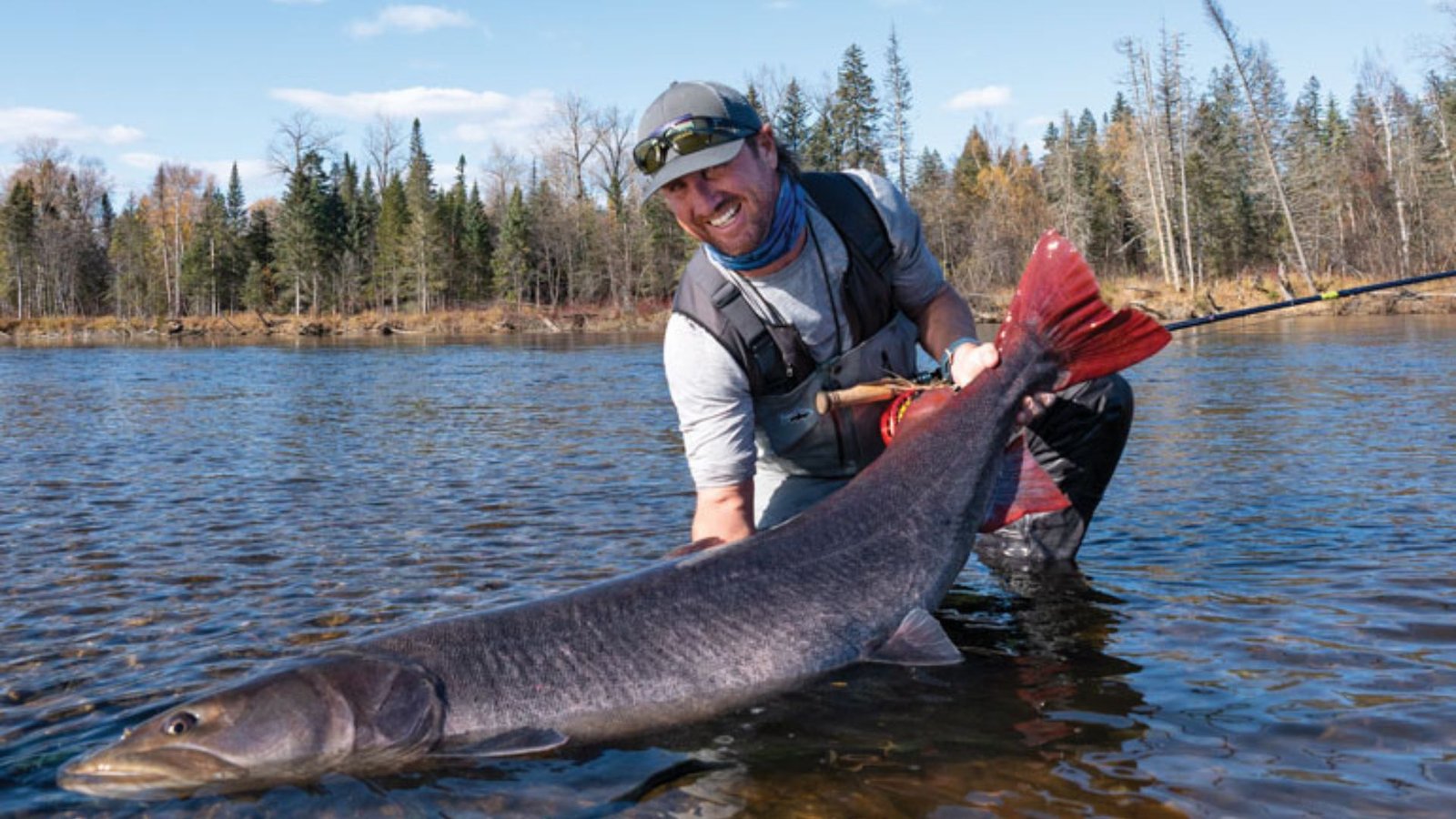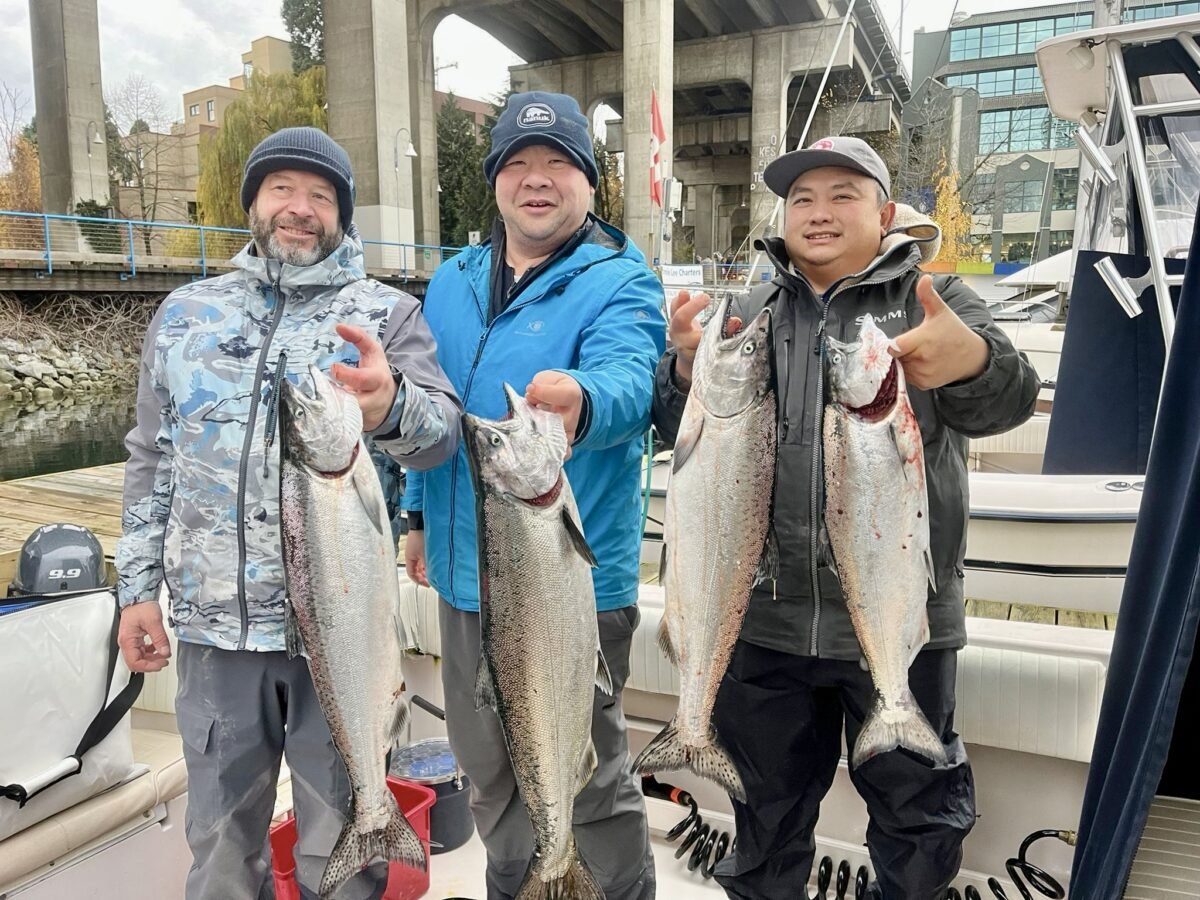Salmon fishing in large rivers presents unique challenges and opportunities. Here’s a comprehensive guide to help you navigate and maximize your chances of success:

How to Fish for Salmon in Large Rivers
Choose the Right Time and Place
Salmon are migratory fish, so timing and location are crucial for a successful fishing trip:
- Seasonal Timing: Research the salmon runs in your chosen river. Typically, salmon migrate upstream to spawn during specific seasons, often influenced by factors like water temperature and daylight hours.
- River Selection: Select rivers known for salmon runs and suitable fishing conditions. Large rivers with deep pools, rapids, and gravel bars are ideal habitats for salmon.
Understand Salmon Behavior
Understanding salmon behavior is essential for effective fishing:
- Migration Patterns: Learn about the salmon species in your river and their migration patterns. Salmon often move upstream in schools, resting in deep pools and eddies along the way.
- Feeding Habits: Identify the salmon’s primary prey in the river, such as insects, small fish, or crustaceans, to choose the right flies or lures.
Gear and Equipment
Choosing the right gear ensures you’re prepared for large river salmon fishing:
- Rod and Reel: Use a medium to heavy-duty fishing rod (typically 8-10 feet long) with a matching reel capable of handling salmon’s strong runs.
- Line and Leader: Opt for a floating or sinking line based on water depth and current speed. Use strong leaders (10-20 pounds test) to withstand salmon’s fighting power.
- Terminal Tackle: Equip yourself with a variety of salmon flies, spinners, or plugs to match local baitfish and insect patterns.
Techniques for Large Rivers
Effective techniques can vary based on river conditions and salmon behavior:
- Drift Fishing: Use drift fishing techniques to present your bait or fly naturally in the current. Adjust your weight and leader length to maintain contact with the riverbed.
- Swinging Flies: Employ the swinging technique with flies or lures. Cast across the current and let your fly swing through potential holding areas, mimicking a fleeing prey.
- Bottom Bouncing: Rig your setup with enough weight to bounce along the riverbed, enticing salmon resting near the bottom.
Locate Prime Fishing Spots
Identify and target prime fishing spots within the large river:
- Pools and Eddies: Focus on deep pools, eddies behind boulders, and the tailouts of rapids where salmon gather to rest or transition.
- Gravel Bars: During spawning season, target gravel bars where salmon create redds (nests). Approach these areas carefully to avoid disturbing spawning fish.
Adapt to River Conditions
Be adaptable and responsive to changing river conditions:
- Water Levels: Monitor water levels and adjust your fishing approach accordingly. Salmon may move to different depths and areas based on water flow and clarity.
- Weather: Consider weather conditions like rain or sunshine, which can impact salmon behavior and feeding patterns.
Practice Conservation
Promote sustainable fishing practices to preserve salmon populations and their habitat:
- Catch and Release: Practice responsible catch and release techniques to protect spawning salmon and future generations.
- Respect Regulations: Adhere to fishing regulations, including catch limits, seasonal closures, and areas designated for conservation.
Safety and Preparation
Ensure your safety and enjoyment during your fishing expedition:
- Wading Safety: Use appropriate wading gear and footwear with good traction. Be cautious of strong currents and slippery rocks in large rivers.
- Emergency Preparedness: Carry a first aid kit, mobile phone or communication device, and inform others of your fishing plans and location.
Tips for Success:
- Patience and Persistence: Salmon fishing in large rivers can require patience. Stay persistent and adjust your tactics based on fish activity.
- Local Knowledge: Consider hiring a local guide for expert insights into the river, fishing techniques, and seasonal patterns.
Fishing for salmon in large rivers offers a thrilling and rewarding experience for anglers of all skill levels. By understanding salmon behavior, using appropriate gear and techniques, and respecting conservation practices, you can enhance your chances of a successful and enjoyable fishing trip.



